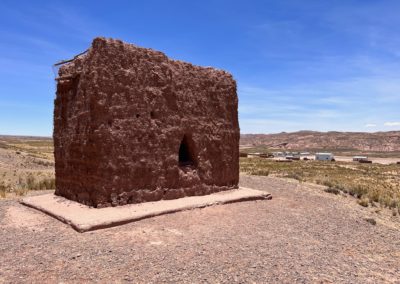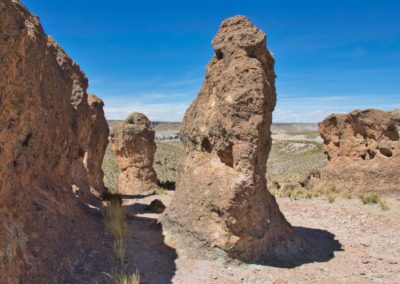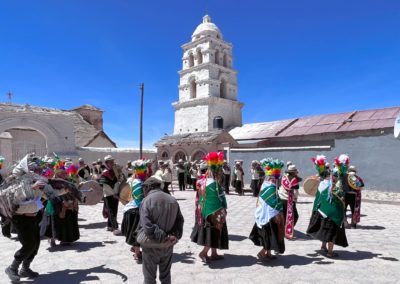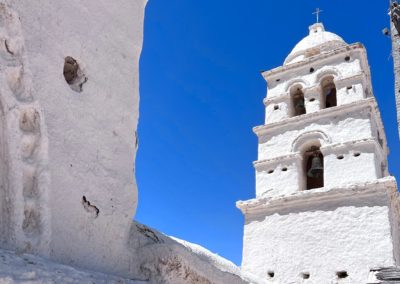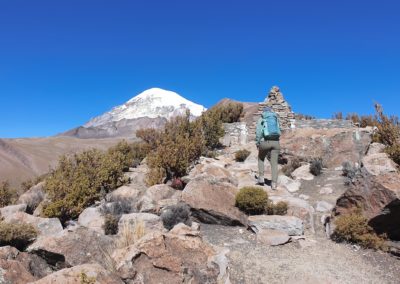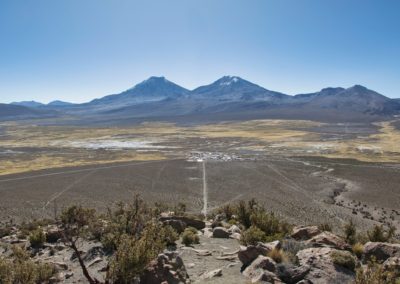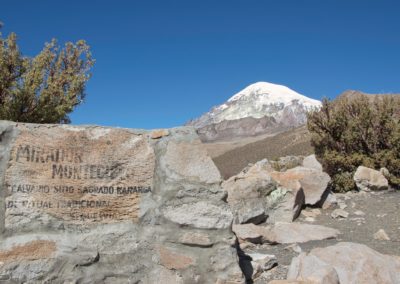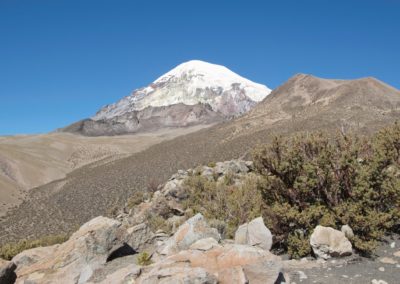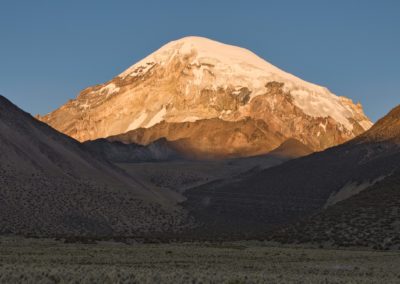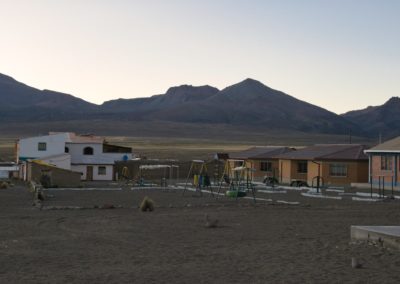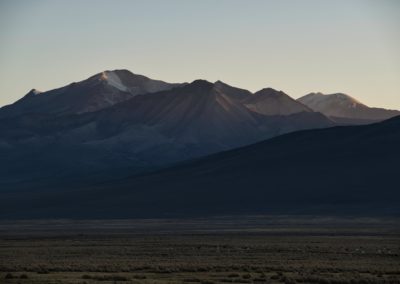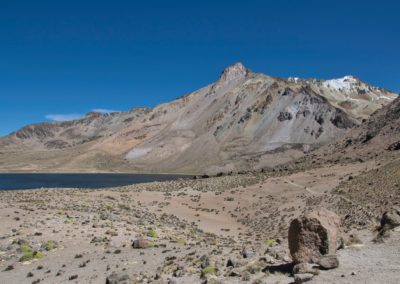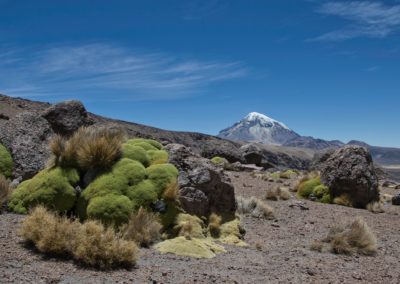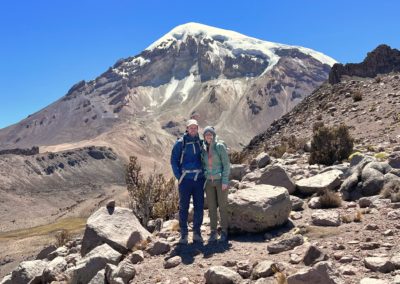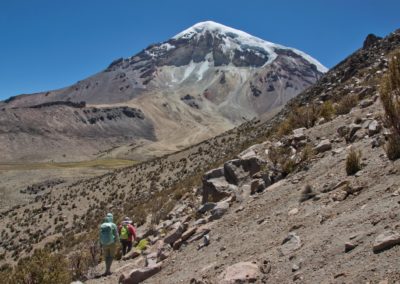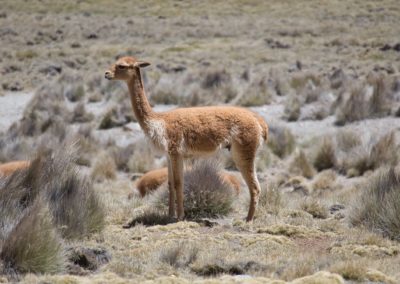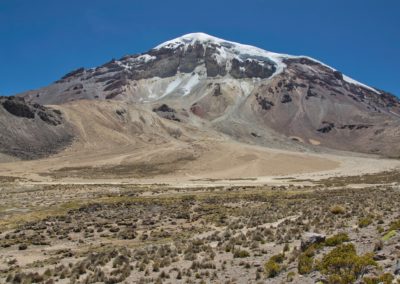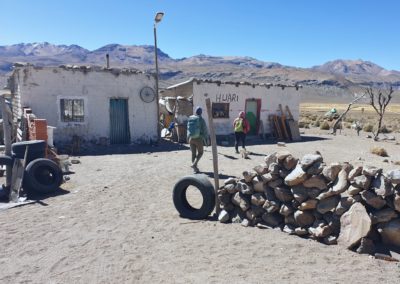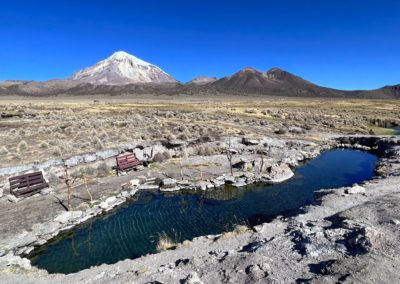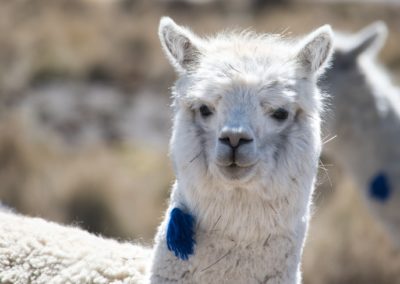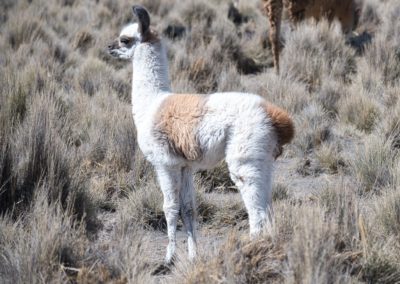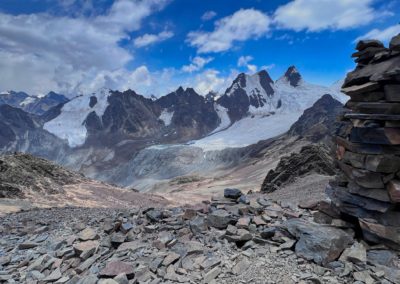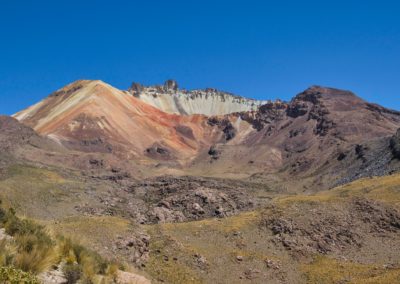SAJAMA NATIONAL PARK
Sajama National Park
Our stay in Sajama National Park, in the western part of the country, marks our last adventure in Bolivia. Located off the main tourist route and therefore less frequented, this park with its impressive volcanic landscape is a true treasure of nature and serenity. Within its boundaries lies the Sajama volcano (6542m), Bolivia’s highest peak.
Off to the national park
Early in the morning, we embark on our journey to the national park. For about five hours, a picturesque and adventurous road takes us through beautiful landscapes from La Paz to Sajama. Stone towers regularly stand at the side of the road. We learn that these are “chullpas”, ancient tombs dating back to pre-Inca times. Around midday, we reach the quaint village of Curahuara de Carangas, where locals dressed in festive attire parade through the main square. They play music and perform traditional dances, captivating the few spectators present.
The journey continues along a field of volcanic formations, catching glimpse of the majestic Sajama volcano, standing alone in the distance. Finally, we drive along the south side of the volcano to the park entrance. The asphalt road gives way to a sandy one, and it is not long before we reach the small village that also bears the name Sajama..
Our highlights
First glimpse of Sajama
Village parade
Traditional dance
Sajama National Park
Sajama National Park is Bolivia’s oldest nature reserve. The park’s mountainous landscape, covering an area of around 1000km², is marked by the surrounding volcanoes. The dormant Sajama volcano, Bolivia’s highest peak at 6542m, along with Acotango (6052m) or the twin volcanoes Pomerape (6282m) and Parinacota (6342m), are above all popular among mountaineers. Other attractions in the park include geysers, hot springs and a diverse flora and fauna.
The starting point for exploring the park is the small village of Sajama. As the park is not on the main tourist route, the village is sparsely developed, with only a few rustic hotels. In this remote location, you can enjoy nature in complete tranquility and experience the hospitality of the indigenous Aymara population. On the other hand, do not expect great comfort. The walls of our hotel barely protected us from the cold, and we experienced a two-day water outage during our stay due to a breakdown.
The Mirador Montecielo offers a magnificent panorama and a great overview of the region. From the village, the path takes us in a straight up the steep hill to an altitude of 4500m. The mirador offers a breathtaking view of the glacier-covered Sajama volcanic dome, the arid high plateau surrounding the village of Sajama and the surrounding volcanoes, including Pomerape and Parinacota.
Our highlights
Isolation & silence
Sajama
Pomerape & Parinacota
Volcanic panorama
Vicuñas, llamas & alpacas
Mirador Monteciel
Sunset
Laguna de Altura
We take two hikes in the park. As the path is sometimes difficult to find, we are accompanied on both occasions by a young hiking guide. Rather shy and only 19 years old, she is far from being an inexperienced mountaineer. She tells us she’s been a guide since the age of 13. At 16, she reached the summit of Sajama (6542m) for the first time, and for her 18th birthday, she climbed Illimani (6438m), the emblematic mountain of La Paz.
Before the hike to the lagoons, we make a short stop at the entrance to the valley to see the geysers, the place where volcanoes breathe, as our guide explains. The hike takes us first through a beautiful valley, and the higher we climb, the more the landscape unfolds and the view of the imposing Sajama volcano is lovely. After about one hour walking, we reach the first and largest of the three lagoons, located on the border between Bolivia and Chile. To reach the second and third lagoons, we would now have to pass briefly through Chilean territory. In the distance, on the other side of the lagoon, we can see a Chilean border patrol car. Relations between the two countries are far from simple, and border demarcation is particularly controversial in this region, where Chile annexed Peruvian and Bolivian territory at the end of the 19th century during the Saltpeter War. After careful consideration, we prefer to err on the side of caution and decide to turn back.
Our highlights
Geysers
Hiking in the valley
View of Sajama volcano
Hike to the base camp
Our second hike takes us to the base camp of the Sajama volcano. We start at the Queñua forest, the highest forest in the world. These rather small and discreet trees brave extreme conditions and are part of the unique vegetation of the Andes. After almost two hours of walking and the first ascent, we arrive at the former base camp. Here, we cross the natural plain at the foot of the Sajama volcano and even discover a group of vicuñas there.
We continue our ascent to reach the next valley, where the new, currently uninhabited base camp is located. After an extremely steep and difficult climb in the sand, we reach the highest point of our hike, at over 5000m, and are greeted by the traditional Bolivian cold wind. We first have to catch our breath, but the view of the volcano is well worth the effort. It is a unique landscape that we are discovering here. We stay here for a while before setting off and then descend along the valley before ending the hike at the entrance to a hot thermal spring.
Our highlights
Hike to the base camp
View of Sajama volcano
Natural plain
Vicuñas
Volcanic landscape
Hot Springs
Along the way to the “Huari” hot springs, we come across numerous llamas and alpacas gazing peacefully on the plain, with the majestic Sajama volcano in the background. Nestled in the midst of an idyllic landscape, we have the small natural hot spring all to ourselves. There is no luxury here, only pure and untouched nature. A combination of stone walls, wood and tarpaulins serves as our changing cabin. In this cold and windy conditions, we waste no time and quickly enter the warm, soothing water. The end of a hike could not be better.
Our highlights
Llamas & alpacas
Hot Springs
Bathing in hot springs
Idyllic landscape
Volcanic landscape
Our most beautiful hikes in Bolivia in detail

